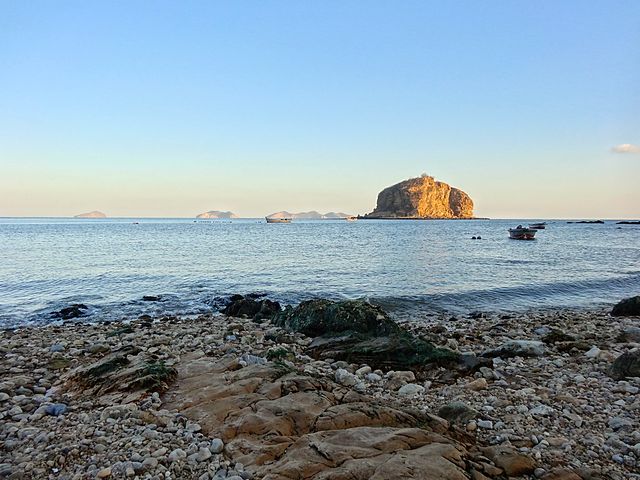Atmospheric tides are global-scale periodic oscillations of the atmosphere. In many ways they are analogous to ocean tides. They can be excited by:The regular day-night cycle in the Sun's heating of the atmosphere (insolation)
The gravitational field pull of the Moon
Non-linear interactions between tides and planetary waves
Large-scale latent heat release due to deep convection in the tropics
Figure 2. Eigenvalue ε of wave modes of zonal wave number s = 1 vs. normalized frequency ν = ω/Ω where Ω = 7.27×10−5 s−1 is the angular frequency of one solar day. Waves with positive (negative) frequencies propagate to the east (west). The horizontal dashed line is at εc ≃ 11 and indicates the transition from internal to external waves. Meaning of the symbols: 'RH' Rossby-Haurwitz waves (ε = 0); 'Y' Yanai waves; 'K' Kelvin waves; 'R' Rossby waves; 'DT' Diurnal tides (
Figure 3. Pressure amplitudes vs. latitude of the Hough functions of the diurnal tide (s = 1; ν = −1) (left) and of the semidiurnal tides (s = 2; ν = −2) (right) on the northern hemisphere. Solid curves: symmetric waves; dashed curves: antisymmetric waves
Tides are the rise and fall of sea levels caused by the combined effects of the gravitational forces exerted by the Moon and are also caused by the Earth and Moon orbiting one another.
In Maine (U.S.), low tide occurs roughly at moonrise and high tide with a high Moon, corresponding to the simple gravity model of two tidal bulges; at most places however, the Moon and tides have a phase shift.
Low tide at Bangchuidao scenic area, Dalian, Liaoning Province, China
Low tide at Ocean Beach in San Francisco, California, U.S.
Low tide at Bar Harbor, Maine, U.S. (2014)






